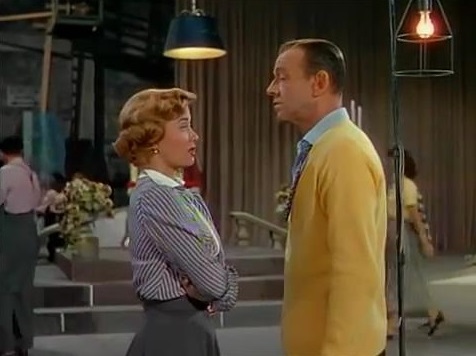
A
tale of two cities, Every Nite at Seven in New York, Every Night at Seven in London.
Bosley
Crowther of the New
York Times, “the best that we can say is that it has one swell number
in it.” Variety,
“two of the numbers are sock enough to almost carry the picture by themselves.” Leonard Maltin, “pleasant”. Dave Kehr (Chicago Reader), “doesn't cohere quite as well as his best work.” Geoff Andrew (Time Out), “lively Technicolor musical”. TV Guide, “a
lovely bit of frou-frou.” Hal Erickson (Rovi),
“brilliance and virtuosity.” Halliwell’s
Film Guide says “journalists congregate... thin musical...”
Andrew Sarris (The American Cinema), “intermittent
flashes of inspiration.”
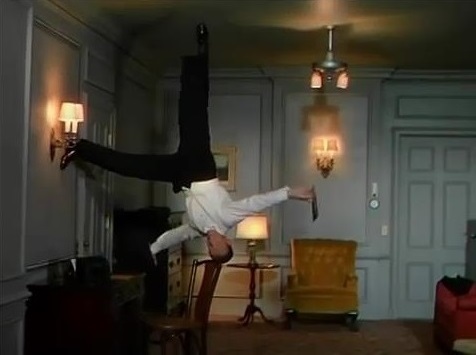
Love Is Better Than Ever
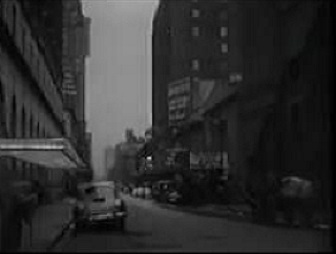
Echt New York, Broadway.
“See?
That’s why I turned agent, no straight men left.”
Case of the
academics, a dance teacher wants to buy a routine from two clients, male twins,
in New Haven (cp. Footlight Parade,
dir. Lloyd Bacon). Seaton has Teacher’s
Pet for this, and how (Altman has the negotiating agent in McCabe & Mrs. Miller).
“If
there’s anything I like, it’s a gal with a mother in Texas” (cf. Sidney’s Anchors Aweigh).
The class of
Terpsichorean toddlers is one of the very most sublime jokes in Donen’s
bundle, and his ease with a joke is remarkable, Kathleen Freeman as the costume
lady uses a pincushion on her wrist like Lionel Atwill
at his darts in Son of Frankenstein
(dir. Rowland V, Lee) quick as a wink. “I’m here for the American
Dancing Instructors of America convention.”
“I’ll
keep your secret.”
Stevens’ Woman of the Year is very nicely
adumbrated.
“Everybody
goes to 21, you gonna be different, you gonna start a whole new world?” Just like home, 21
is, Gene Kelly eats there, and the Copacabana is right out of Singin’ in the Rain, most amusing (cf. Mackendrick’s Sweet Smell of Success), “because,
you see, although we’re glamorous and beau-teeful,
we’re just intelligent girls at heart.”
Donen proved
here, as later in Surprise Package,
too fast for critics to follow, and a good deal ahead of his time, thus Bosley Crowther of the New
York Times, “foolish little fable... watery nonsense...
insufferable... we regret the necessity to note that it manifests no
improvement in either movies or love,” get him, will you? Necessity!
Strictly from famine, the B.C. “we”! “Movies or love,”
he says, “M-G-M made this picture, and we regret” etc. “But
heaven deliver the heedless...” (it opened
“at
the Trans-Lux Fifty-second Street Theatre”,
see Mackendrick). Leonard Maltin, “forgettable
froth”. TV Guide,
“lighthearted romantic comedy... a good script is marred by uneven
direction and leads who are not always up to the energy of the project,”
there’s cant for you, cantering.
“So five
hundred times I had to write, ‘I will not step on my father’s
laughs.’” Even more, “make up your mind, that stale
convention or are you gonna live?”
Sports of all
kinds, “a comic they call him,” exiting the Zephyr Club, just
around the corner from Lindy’s, “he really pitches a tent,
doesn’t he.”
The upshot is The Children’s Hour, or rather These Three (dir. William Wyler), anyway a compromised reputation
or the semblance of one, mothers pull kids out of the Anastacia
Macaboy Dancing School.
Preston
Sturges’ The Lady Eve for the counterwooing, and Charade
for the big finale.
Larry Parks
founds his agent on Robert Montgomery arguing sanity with reaches of Hope,
Benny, and Silvers (“not on ya life”).
Elizabeth Taylor builds steadily on the out-of-town girl to a fine comic
understanding.
Halliwell’s Film Guide bears this Donenesque
blunder, “only moderate production values are brought to bear on this
wispy plot which shows no signs of development.”
Seven Brides for Seven Brothers
It’s a
thrilling film, not only because it builds to the famous barn-raising dance and
fight to close the first part, followed by a long buildup to the punchline of
the second, but also by reason of Donen’s great technique.
His sang-froid
with CinemaScope lets the frame cut off Jane Powell just below the chin
standing next to Howard Keel before the wedding (with a slight perspective
suggesting an angle of futurity).
A.H. Weiler of the New York Times thought it wiser not to
ask, but it’s all explained in the exposition. Back East where it’s
civilized a man can take his time courting a girl, but who can spare time on
the farm in Oregon when there’s trees to be cut (the bridegroom can land
one within an inch of where he wants it) and land to be plowed (twenty acres in
a day, if he puts his mind to it)?
Donen uses a
sound stage for “Wonderful Day”, the mountains go out of focus when
Powell sings, a breeze stirs the leaves and flowers.
His long takes can be motionless like the farmhouse interior as the brothers
are introduced, or circular in a characteristic motion (slow and back around)
like “Lonesome Polecat”, or just plain ferocious as when he leaves
Keel up a tree to frame Powell in a window (“When You’re in
Love”) and returns to him afterward, all in one shot.
“Goin’ Courtin’”
is done in three shots, the brides’ song in two, “Lonesome
Polecat” in one.
The set
decoration is noteworthy as one department (the M-G-M orchestrations are
another, with banjo) of a solidly realized picture down to the smallest
details. The disorder and refuse in the farmhouse are quickly seen and quickly
mended, these honest farmers who dance up a barn (and fight it down again,
goaded by vicious townsmen) are not exactly the “hix”
fondly lauded by reviewers of the time.
Deep In My Heart
A
theory of criticism.
As
distinct from a work of biography.
An artist is
present in all of his works, they constitute his biography.
The perception of
this is criticism.
Sigmund
Romberg, seen through the prism of Singin’ in the
Rain.
Bosley Crowther
of the New York Times was a colossal
ass who found Jose Ferrer in the great central number “labored and
humorless” (cp. The
Last Tycoon, dir. Elia Kazan).
Halliwell’s Film Guide praises the script, funny the writer knows from. Sarris, “virtually a complete disaster.”
Funny Face
The
photographer’s art.
Opposed to it is
something called Empathicalism, a philosophy to Frenchmen.
Aspects of the
theme are from Minnelli’s An American in Paris and Curtiz’ White
Christmas (“Choreography”), Indiscreet and
Resnais’ I Want to Go Home are very useful analyses.
Nabokov’s
“Ode to a Model” is particularly apt.
Kiss Them For Me
A perennial theme
for Donen, servicemen at home (On the Town, It’s Always Fair
Weather, but also Damn Yankees), treated to a scouring limit that is
transcended the way shellshock or combat fatigue is numbed over and left
behind, in fact it’s like just what it says it is, the better part of a
week in San Francisco away from Navy flying in 1944.
Critics had no
comprehension of this at all, whatsoever.
Indiscreet
It must be
properly analyzed to be seen at its true measure, critics have never done that
but found the film laudable and “thin”, the play
“fluff”. The complex structure can be seen to combine the husband
and the lover in Lubitsch’s That Uncertain Feeling as one, that
accounts for the overall form in which a deceptive lover is snared and landed,
and the admirable tessitura of London and international society (the lover
lectures on “hard currency” not bound to another, takes a job with
NATO in Paris while he conducts his love affair with a West End stage actress,
and finally delivers a “monetary pact” in New York).
The result of all
this is one of the most beautiful color films ever made, a preoccupation of
Donen’s, and this has not been noticed either.
Once more, with feeling!
Scientific
American and Nature
periodically try to explain art as a neural function or some such nonsense,
that’s half the film.
The other half is
the board of trustees, God bless them.
Cassavetes’
Too Late Blues is on the same beam, per Duke Ellington.
Liszt and an
uncredited Berlioz have a hand in this.
Surprise Package
An American mobster with his hand in everything is deported to a Greek
isle with nothing, there the King of Anatolia exiled by the People’s
Republic lives comfortably on the crown jewels, the gang sends a moll instead
of the dough.
“I read it
in a book.”
“What book?
I know your whole library, you got Robin Hood and Peyton Place!”
The mysterious
formulation of Dassin’s Topkapi
is partially accounted for by this Runyonesque
fantasy so exhilarated by its location it might by turns be Born Yesterday or The Lady from Shanghai at any moment (it opens like Goldfinger’s
mob confab).
“Love is a
surprise package,” says the song by Sammy Cahn and James Van Heusen.
Bosley Crowther of the New
York Times pronounced it “chaff” and “witless”. So Halliwell’s Film Guide,
“flat and feeble”.
A heist is in
order. “Aw, I’m sorry. Is that the only crown ya got?” Cf. Frankenheimer’s The Train.
It might be
Huston’s Beat the Devil or
Renoir’s Le Carrosse
d’or, which is how it ends.
The joke is see you in C-U-B-A.
The Grass Is Greener
The man of money
(half a crown) intrudes upon the private apartments of a
National-something-or-other “stately home” (Coward) and takes the
Countess to London and the Savoy.
The Earl objects,
there is a duel.
Wilde and some
others figure in the script, which is acted by a nonpareil cast.
Charade
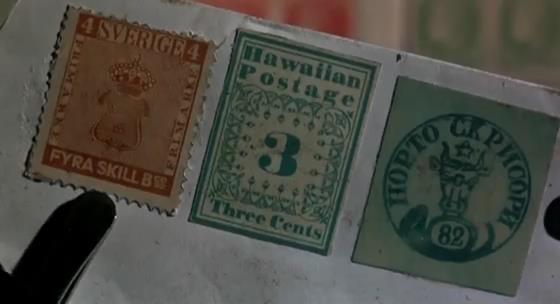
Consequences of
an assassination, its motive (the MacGuffin), “and twelve Princess Grace commemoratives...”
Alfred Hitchcock
(The Man Who Knew Too Much, To Catch a Thief, The Lodger etc.) and Robert Siodmak (La Crise est finie at the Comédie-Française, where the title
signifies “Happy Days Are Here Again”).
The
mirror of Arabesque.
Bosley
Crowther of the New
York Times, “an interesting element in the picture is Henry Mancini's
offbeat score, which makes the music a sardonic commentator. I'll go along with
what it says.” Robert B.
Frederick (Variety),
“has it made.” Pauline Kael,
“high-style kitsch.” Time Out, “mammoth audience teaser.” Dave Kehr (Chicago Reader),
“perfectly crafted”. TV Guide, “charming”. Halliwell’s Film Guide, “satisfying sub-Hitchcock
nonsense,” citing Arthur Knight, “sinister”.
Arabesque
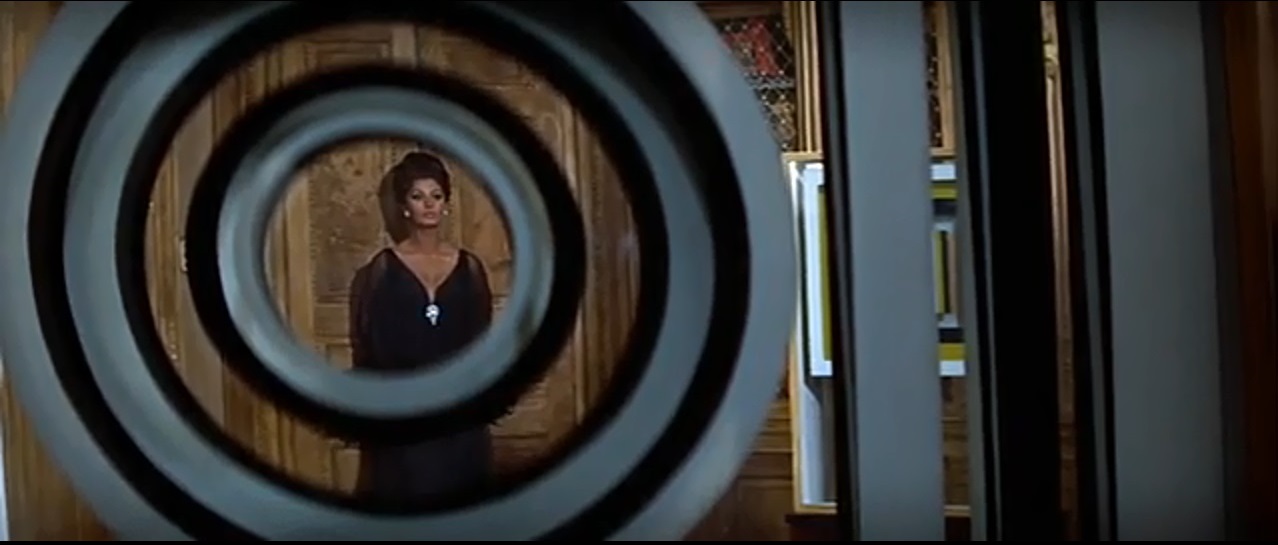
It takes an
Oxford don to solve for x, the year
before Losey’s Accident.
A
visit to the eye doctor, a new prescription.
The
Hittite inscription that isn’t one but a mere goosing, the prime minister
who isn’t one but a dead ringer, for purposes of state. A great work of art on the subject, closely
related to Charade, intricately
wrought on themes of Hitchcock (Foreign
Correspondent, Marnie etc.) and
Welles (The Lady from Shanghai, Mr. Arkadin etc.) to convey a sense of
art for art’s sake (Binder, Dior et
al.).
Profound
score by Henry Mancini. A British picture (Challis cinematography, Dempster
camera), Anglo-American at least. The swans do not “fly high in the
kingdom of Vesta” but swan about on the river
Isis.
Grace Glueck (New York
Times), “apparently goes on the theory that in a chase movie the plot
should only be used as a framework, for visual entertainments.” Variety, “fault lies in a shadowy plotline and confusing characters.”
Tom Milne (Time Out), “very
sub-Hitchcock.” Dave Kehr (Chicago Reader), “not quite the tour de force”. Film4, “convoluted
and often ridiculous.” TV
Guide, “mindless, absurdly complex”. Judd Blaise
(Rovi), “airy, intentionally superficial comic
adventure.” Halliwell’s Film
Guide, “utterly forgettable” (citing the Monthly Film Bulletin to much the same effect, also Sight and Sound, and Robert Windeler in rebuttal, “a strikingly visual chase and
intrigue yarn”).
Two for the Road
This has a real,
functional surrealism tied to Albee (Everything in the Garden) in its
latter scenes, which is prepared in the American tourist couple and daughter.
The wife’s affair is also signally betokened by the husband’s
highway fling, this is the way in which his career advancement and her
pregnancy are understood (Clayton’s The Pumpkin Eater is the major
precedent).
The theatrical
device of intertwined cars and hitchhikers is a suture from the playing space
of Miller’s After the Fall, a continuous fluid structure is obtained by way of
Welles’ flashback organization in Citizen Kane.
A subtle taste
for Antonioni, the refined study of Hitchcock in Charade and Arabesque,
the screenplay by Frederic Raphael, and the actors, give an account of marriage
prefiguring Nabokov’s Ada in certain respects.
The four motifs
wind through France on a walking tour of architecture and a girls’ choir
bound for a music festival, a roadster holiday at a venture, a trip to Greece
with an old flame’s new family, and a business trip to St. Tropez.
The plug-in Venus
from It’s Always Fair Weather, “Chantilly Glaces!” on sale in that
city, the patron as Old Man of the Sea, and everywhere a swiftness of invention
brought to immediacy by the stylistic conception, make for a masterpiece of the
highest water.
A spoof of
Americans abroad takes the measure of Tati’s postman obliterated by
American efficiency, and Melville’s Parvulesco
aghast at American female dominance.
Various hurdles
are dispatched with a sense of time configured as momentum, and this is to be
understood as an imaginative principle at work, the meaning of surrealism.
Cat on a Hot
Tin Roof (dir. Richard Brooks)
figures in the Americans’ spoiled daughter. On the road that leads to Cap
Valéry, her father is “the largest pocket of untapped natural gas known
to man.”
Bedazzled
A C. of E.
catechism, Michelangelo painted it for the RC, Cook
& Moore & Donen filmed it.
The opening (and
closing) “spin” motif was paid tribute by Robert Altman in Prêt-à-Porter.
One point of
departure for the devil’s tricks is a Twilight Zone episode
starring Luther Adler, “The Man in the Bottle”, written by Rod
Serling and directed by Don Medford.
American
audiences used to get this sort of thing every Sunday morning from Insight,
but not on this lavish, sumptuous scale, with some very elegant ideas on color
cinematography by Donen.
You have love
envisioned from the standpoint of the unrequited working class, the frustrated
intelligentsia, and the rich but deceived. You have the gratuitous nightmare of
the pop star, featuring the title number as not sung by Peter Cook. You
have the sex life of a cicisbeo. At last, you have the gorgeous flummery of the
nunnery.
Interspersed are
really classic bits on the seven deadly sins, what are known as “quick
takes” (Envy is a bitching queen, Lust is Raquel Welch).
Staircase
The two parties
in this terribly undervalued comedy are hairdressers for the far outer reaches
of London, each facing a moment of truth. Charlie (Rex Harrison) is up before
the judge on a charge of willful impersonation of the female, to wit Mrs. Whatsit launching a battleship, in an ad lib revival of his
cabaret act, or perhaps the bleedin’ young
copper what pinched him has still further evidence of incitement to depravity.
Harry (Richard
Burton) has gone completely bald, which as Charlie gleefully points out simply
won’t do in the tonsorial line.
They care for
their mums, Charlie’s is silent, voracious, institutionalized, and calls
him a Sodomite to his face. Harry’s is vociferous, arthritic,
incontinent, and cries when he leaves the house.
The litterstrewn park with Coney Island sunbathers, two having
it off after a sudden rainshower, the litterstrewn street, Charlie’s pickup of an evening,
tears, recriminations, courage for the new day.
The Little Prince
Only a film
director can grasp the full import of the experience symbolized, and those who
are familiar with that experience by report.
He draws an
elephant inside a digesting snake, it’s taken
for a hat, charming, exotic, disgusting or tiresome.
His plane crashes
in the desert. A series of illustrative episodes describe his difficulties, but
the thing is a constellation.
Lucky Lady
After the rare cri
de cœur of The Little Prince, Donen
strikes back at the Philistines.
The great John
Held, Jr. cartoons are endpapers of the high life, the film depicts its
furnishings. A note from Truffaut’s Jules et
Jim supplies the partnership, deflecting George Roy Hill’s Butch
Cassidy and the Sundance Kid (also, a critic has noted The Sting).
Tijuana bar money
comes from running wetbacks, there’s a fortune in contraband. Rumrunners
rise high, tangle with a near-psychotic Coast Guard skipper, and beat the East
Coast mob in the battle of San Nicolas Island.
Altman took a
turn at this as homage in Popeye, with another view.
The dullness of
the underworld is plainly depicted in Seiter’s Borderline.
Movie Movie
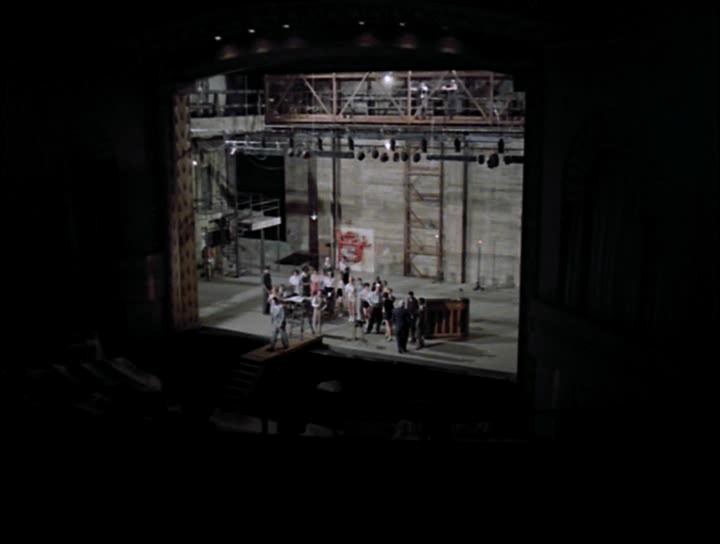
Donen’s
masterpiece by Gelbart & Keller on the Depression
and the war years twice over, from Body
and Soul (dir. Robert Rossen) and 42nd
Street (dir. Lloyd Bacon), with Zero
Hour (“his plane was his mistress”) in between, the trailer.
What it was all
about, a great work of analysis. “Gee, Simpson, if you’re what
orphans are like, there oughta be a whole lot more of
‘em.”
“Kitty,
I’ve been around a long time, and you can take it from me that
Broadway—is a queer racket.”
A certain note is
sagely adduced from The Boy Friend
(dir. Ken Russell).
Vincent
Canby of the New York Times, “it seems so effortlessly funny that I suspect that the
real intelligence and discipline that guide the project will be overlooked.”
Variety, “the conception is a
mess, and it shows.” Time Out,
“dire script... flat performances... pointlessness...” TV Guide, “you have to know a lot
about the movies upon which this is based to glean the most out of the
humor.” Dave Kehr (Chicago Reader), “the screenplay relies too heavily on facile non
sequiturs, but Donen has the shape down pat: squared off, symmetrical, and
wholly self-contained.” Craig Butler (All Movie Guide),
“ultimately just a silly exercise.” Halliwell’s Film Guide, “pretty patchy... golden
moments...” citing Richard Combs (Monthly
Film Bulletin), “swallowed in its own idiocy.”
“Age
before beauty,” says George Burns, “after you.”
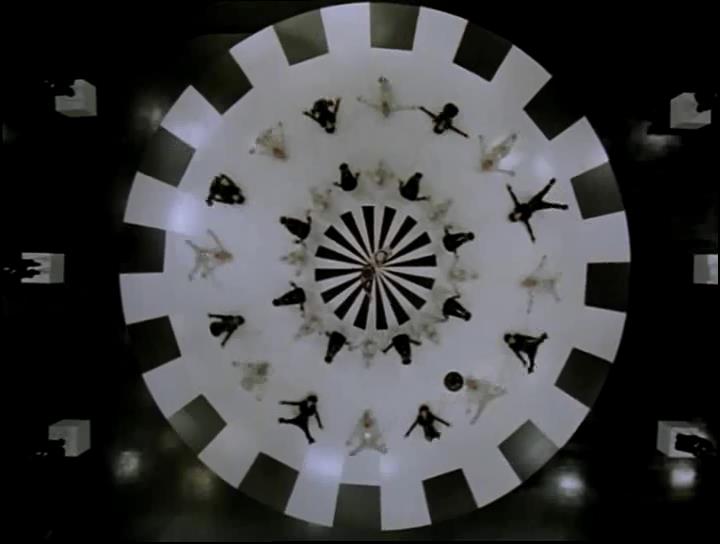
Saturn 3
The entire film exists
to posit a single image, that of a man who straps on explosives in order to
destroy a robot.
A remake of The
Grass Is Greener and much imitated.
Blame It on Rio
The problem as stated
is from Matisse, it builds to a climax of farce and is reconciled per Mozart, the equation is “emotion recollected in
tranquility”.
The narrative
structure is derived from Bergman by way of Allen, and the keynote is the
“I Left My Hat in Haiti” number in Royal Wedding. That complicated “stage” piece
is directly transposed into a “realistic” cinema format in one shot
dollying right onto a street musician.
Above all, a
masterpiece of lighting, at a time when several directors (Rafelson, Mulligan)
were discovering the implications of cool colors briefly propounded by Huston
in a single shot of The Man Who Would Be
King. The structure presents a certain problem of harmonization.
This is resolved in subtle color combinations, organized as a scale of pure colors
modulated through shade, with glints of pure sunlight sometimes in the
background (or highlighting the foreground), and cool shaded colors
predominating.
The range of his
palette gives Donen an opportunity for analysis and representation of Rio colors,
and he uses it to full advantage. His compositions grow in subtlety and
complexity, giving very deep and very fresh color combinations.
The coda adds a
little sauce to this variation on a theme, with a gag about being young twice.
Love Letters
Donen’s
color harmonies are of the deepest and rarest. The beauty of that is,
television’s always had a hard time coping with color composition
(compare the gentlemanly chiaroscuro of black and white), and this is an ABC
production.
Prokofieff: Sonata #7, Op.
83, 3rd Movement: precipitato
Split-screen,
various angles of attack, a group of monitors, exhaustively realized up against
Stravinsky and Bartók, adequately.
Mischa Dichter, “five
cameras... one take.”